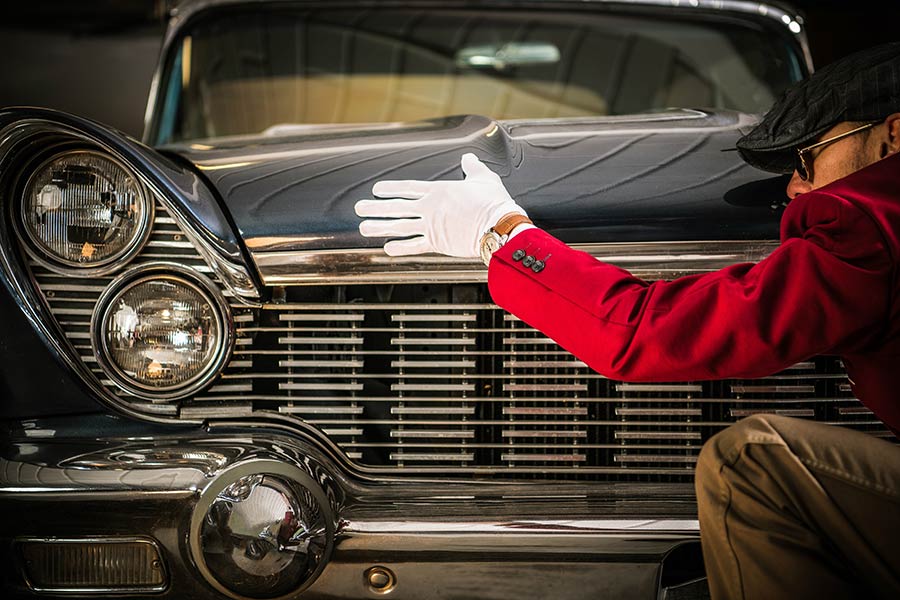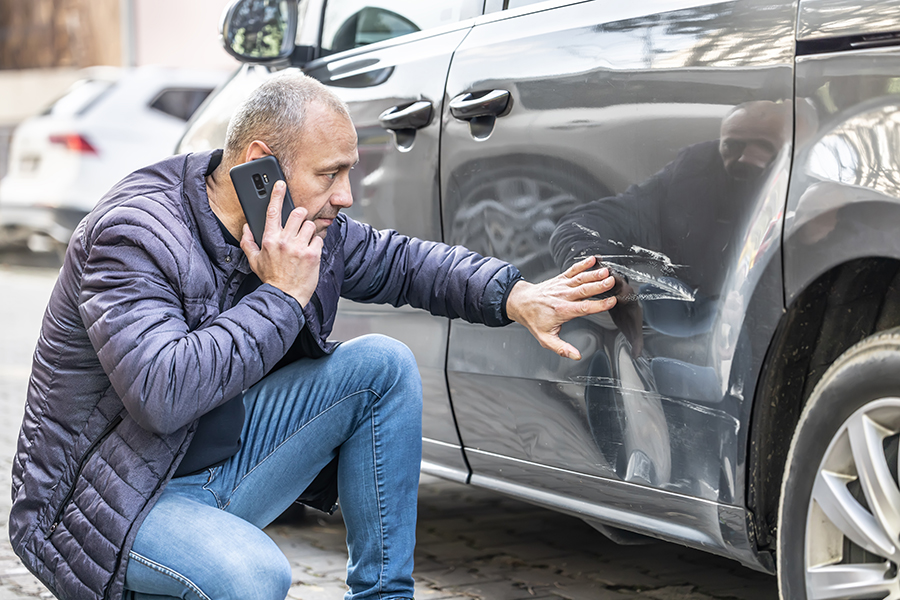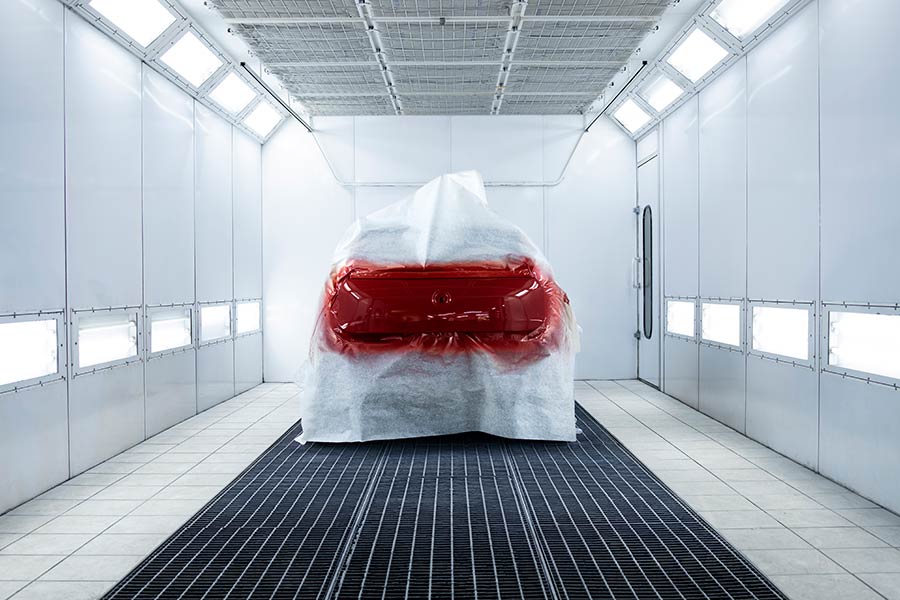Diving into the world of vintage car body restoration is like opening a treasure chest of automotive history. Each scratch and dent tells a story, waiting to be brought back to life with a touch of care and expertise. Unlike modern cars that roll off assembly lines by the thousands, restoring a classic car is an art form, requiring patience, precision, and a deep appreciation for the past. It's not just about making an old car look new again; it's about preserving a piece of history on wheels. Let's explore how you can give these timeless beauties another chance to shine on the road.
Key Takeaways
-
Restoring a vintage car's body is not just about looks; it's about preserving history. This process adds value and brings life back to old cars.
-
To start, learn different restoration techniques. Knowing what works best can save time.
-
The restoration process is step-by-step. Rushing can lead to mistakes. Take your time for the best results.
-
Always think about ethical considerations. Use original parts when you can. This keeps the car's history alive.
-
Be ready for challenges. Restoring old cars can be hard, but don't give up. The end result is worth it.
-
Think about what changes to make. Sometimes, adding new features is good. But, keeping the car original is also valuable.
Importance of Restoration
Preserving History
Vintage cars hold a special place in automotive history. They tell stories of past eras, showcasing the evolution of technology and design. By restoring these vehicles, we contribute to cultural heritage. It's like keeping a piece of history alive for future generations to see and learn from.
Enthusiasts play a key role here. Their passion and dedication help preserve these historical treasures. They ensure that the legacy of vintage cars continues, making history tangible and accessible.
Maintaining Authenticity
Restoring a vintage car isn't just about making it look new. Using original parts and colors is crucial for this reason. These elements keep the car true to its era, preserving its authenticity.
Finding authentic components can be tough, though. Many parts are no longer made or are rare to find. Despite these challenges, staying authentic is important. It ensures the car's value and historical accuracy remain intact.
Restoration Techniques
Best Practices
Before diving into the restoration, thorough research is key. It helps understand what the project involves. Consulting with experts can provide insights into best restoration practices. They know the tricks and tips that books might not cover.
Documenting each step is crucial too. It serves as a guide for future projects and helps track progress.
Tools and Materials
For body restoration, certain tools are indispensable. These include sanders, welders, and paint sprayers. Each plays a vital role in shaping and finishing the car's body.
Choosing the right materials ensures the car remains authentic. It's about maintaining its original charm. Safety equipment is also essential for personal protection during work.
Sourcing Parts
Local Sources
Local swap meets are treasure troves for vintage car parts. Auto restoration shops can also offer valuable finds. Networking with local vintage car clubs opens up more sourcing options.
Local sourcing supports your project with immediate help if needed.
Online Vendors
Finding reputable online vendors requires diligence. Look for those specializing in rare parts. However, be cautious about buying unseen parts.
Checking vendor reviews and return policies can save headaches later on.
Restoration Process
Documentation Importance
Keeping detailed records during the restoration is crucial. It helps in tracking progress and ensuring every step is well-documented. Documentation adds value to the restored vehicle, making it more appealing to potential buyers or appraisers. It's wise to photograph each step, creating a comprehensive restoration diary. This visual record can be invaluable, showcasing the transformation and hard work put into the vintage car.
Step-by-Step Guide
A solid plan is essential before diving into body restoration. Start by assessing the vehicle's condition thoroughly. Look for rust, damage, and wear that might affect the restoration process. A step-by-step approach ensures nothing is overlooked. Begin with stripping down the car to its frame, then move on to repairing or replacing damaged parts. Painting and detailing come last, giving the car its final look and feel. Each phase should be carefully planned and executed.
Specialist Workshops
For complex restorations, specialist workshops are your best bet. These places have experience with vintage cars and understand their unique needs. They can bring a level of craftsmanship that's hard to match at general repair shops. Before committing, check their previous work and references. The right workshop can make a significant difference in the quality of the restoration.
Ethical Considerations
Balancing Modernity
Integrating modern safety features into vintage cars is a delicate task. It's crucial to maintain authenticity while ensuring the vehicle is safe for today's roads. Using advanced materials can significantly enhance a car's durability. However, it's essential to keep the classic look intact. Upgrading functionality without altering the original design is possible and advised.
Modern technology allows for subtle improvements. For example, disc brakes can replace drum brakes without changing the car's appearance. This balance between old and new ensures both safety and aesthetic appeal.
Historical Accuracy
Restoring a vintage car requires more than just mechanical skills; it demands a deep understanding of its history. Thorough research ensures that every detail reflects the era accurately. Consulting with historians or enthusiast clubs can provide invaluable insights.
Using period-correct parts and techniques is non-negotiable for true authenticity. Sometimes, this means hunting down rare components or learning old methods of craftsmanship. This dedication to historical accuracy not only honors the vehicle's legacy but also enriches the restoration journey.
FIVA Standards
The Fédération Internationale des Véhicules Anciens (FIVA) sets global benchmarks for vintage vehicle restoration. Adhering to these standards guarantees that a car is recognized internationally for its authenticity and value. Following FIVA guidelines ensures that restorations respect the original design and manufacturing techniques.
FIVA standards are pivotal in maintaining a car's historical integrity and market value. They serve as a guide for restorers aiming for excellence in their work.
Challenges Faced
Finding Reputable Shops
Research is key when looking for a shop that knows vintage cars inside and out. It's wise to look for shops with a strong history in restoring old beauties. They should proudly show before-and-after photos of their projects. This gives you a clear picture of what they can do.
It's also smart to get quotes from different places. Compare not just the prices, but how long they say the work will take. This helps you find the best deal and timeline for your project.
Legal Requirements
Restoring an old car isn't just about making it look good. You must make sure it meets today's rules on emissions and safety. This can be tricky because laws change depending on where you live.
Getting advice from legal experts can save you headaches later on. They know all about these rules and can guide you through them. This way, your car won't just look great; it'll be ready to hit the road without any legal issues.
Mechanical Skills
If you're thinking of fixing up a car yourself, knowing how things work under the hood is crucial. Consider taking classes or joining workshops focused on car restoration. They teach you valuable skills that come in handy during the project.
Start small if you're new to this world. Tackling smaller projects first builds your confidence and skills over time.
Enhancements vs. Originality
Safety Upgrades
Safety should always come first in vintage car body restoration. Upgrading brakes and seatbelts is crucial. Modern vehicles have far superior braking systems and safety belts that can save lives in an accident.
Installing modern lighting improves visibility on the road, especially at night. It's a simple change that makes a big difference.
For security, consider modern anti-theft systems. They protect your investment from theft, which is important for such valuable cars.
Performance Improvements
Enhancing engine performance can be done while keeping the car's authenticity. There are ways to improve power and efficiency without changing the classic look of the engine.
Upgrading suspension and tires significantly improves handling. But it's essential to balance performance improvements with historical accuracy. You don't want to lose the original feel of driving a vintage car.
Preserving Original Features
Preserving unique features and patina is vital. These elements give a vintage car its character. Techniques for restoring without over-restoring help maintain this charm.
etimes, it's best to leave well enough alone to maintain character. Not every part needs to be shiny and new. Some wear shows the vehicle's history and adds to its story.
Future of Preservation
Classic Car Shows
Classic car shows are not just events; they're celebrations of automotive history. Here, enthusiasts display their painstakingly restored vehicles. The benefits are immense. Owners receive admiration and recognition for their hard work. Such events also serve as prime networking grounds.
By entering these shows, restorers can connect with others who share their passion. They exchange tips and stories, enriching the community spirit. Moreover, feedback from peers and judges at these events is invaluable. It guides future restoration projects towards perfection.
Incentives for Projects
Restoring a vintage car isn't just a labor of love; it can also be financially rewarding. Some organizations offer financial incentives or grants to individuals restoring historic vehicles. This support makes the restoration journey a bit easier.
The personal satisfaction one gets from bringing a piece of automotive history back to life is immeasurable. It's about preserving a legacy that outlives the restorer. These projects contribute significantly to the community and cultural heritage by keeping the past alive and rolling on our roads.
Insuring During Restoration
When restoring a vintage car, securing specialized insurance coverage is crucial. This protection should reflect the vehicle's evolving value throughout the restoration process. Accurately valuing the car ensures you're covered adequately in case of any mishap.
As the car's condition improves, its value increases. Restorers should regularly update their insurance coverage to match this rise in value. Doing so guarantees that your investment is always protected, allowing peace of mind throughout the restoration journey.
Closing Thoughts
Restoring a vintage car is more than just a project; it's a journey back in time, preserving history on wheels. You've seen how it blends art and science, from choosing the right techniques to wrestling with the ethical dilemmas of keeping it original or adding modern twists. It's not just about the shine but ensuring these classics can cruise the streets, turning heads for years to come. Remember, every dent polished and part replaced is a step towards safeguarding automotive heritage.
hat's your next move? Whether you're eyeing that rusty gem in the garage or dreaming of breathing new life into a family heirloom, it's time to roll up your sleeves. Dive into the world of restoration with passion and patience. Share your story, inspire others, and keep the legacy of vintage cars alive. Let's hit the road to preservation, together.
Frequently Asked Questions
What is the importance of vintage car body restoration?
Restoring a vintage car breathes new life into it, preserving its history and charm for future generations. It's like giving a classic novel a new cover, making sure its stories continue to be told.
Can you describe some common restoration techniques?
Sure! Think of restoration techniques as the tools in an artist's kit. Sandblasting to strip away old paint, metal fabrication to repair bodywork, and careful color matching for that perfect paint job are just a few ways we bring classics back to their glory.
What does the restoration process involve?
Imagine taking a time machine back. The restoration process is similar; it meticulously reverses years of wear and tear, step by step. From stripping down to bare metal to reassembling with precision, it's all about attention to detail.
Why should ethical considerations be taken into account during restoration?
Just like doctors take an oath to do no harm, restorers must respect the vehicle's integrity. Ethical restoration ensures the car's historical value isn't compromised by unnecessary modifications or shortcuts. It's about honoring its past.
What are some challenges faced during vintage car body restoration?
Imagine trying to solve a puzzle without all the pieces. Finding rare parts, matching original colors, and replicating historical accuracy are just a few hurdles restorers jump over daily.
How do enhancements compare with keeping a car original?
Enhancements can be like adding spice to a recipe - when done right, they enhance flavor without overpowering the dish. However, keeping a car original preserves its true essence and historical value, much like keeping a classic recipe untouched for authenticity.
What's the future of vintage car preservation?
The road ahead looks promising with advancements in technology and growing appreciation for heritage. It's as if we're building bridges between past craftsmanship and future innovations, ensuring these timeless beauties cruise gracefully into tomorrow.
















